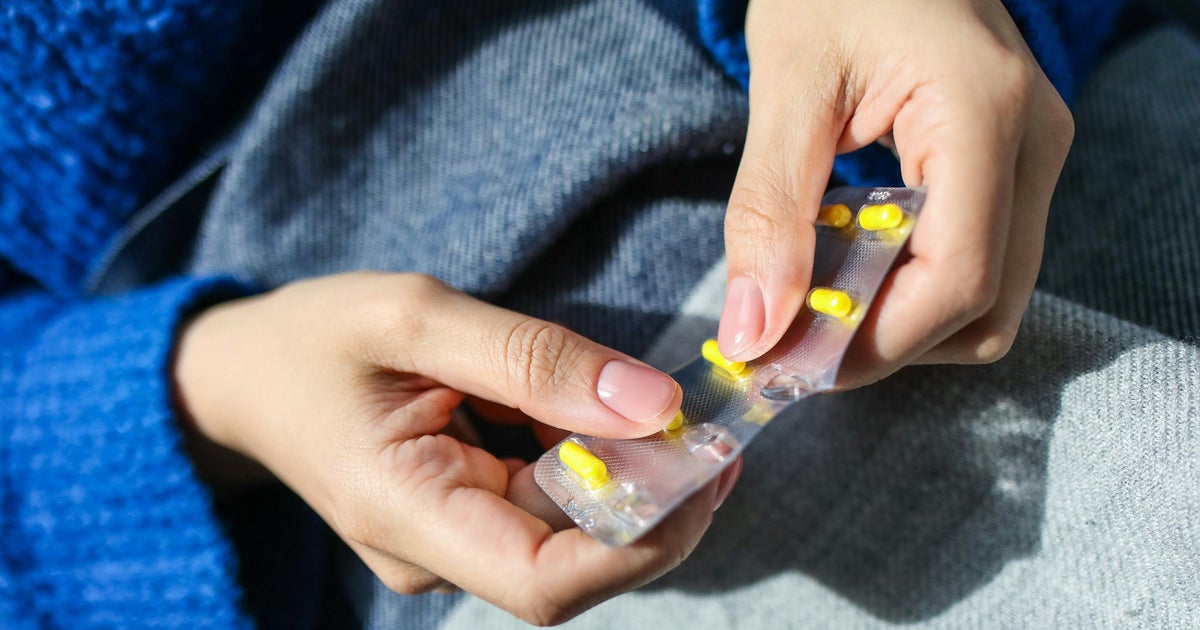BBC News reports on assisted dying in Canada, where some say it’s now easier to choose to die than get support to live
3-D Printed skin to replace animal testing

A research team from TU Graz and the Vellore Institute of Technology in India is developing a 3D-printed skin imitation equipped with living cells in order to test nanoparticles from cosmetics without animal testing.
Directive 2010/63/EU laid down restrictions on animal testing for the testing of cosmetics and their ingredients throughout the EU. Therefore, there is an intense search for alternatives to test the absorption and toxicity of nanoparticles from cosmetics such as sun creams. A team of researchers from Graz University of Technology (TU Graz) and the Vellore Institute of Technology (VIT) in India is working on the development of skin imitations that mimic the native three-layer tissue structure and biomechanics of human skin. Such imitations can be produced using 3D printing and consist of hydrogel formulations that are printed together with living cells.
Hydrogels in which skin cells survive and grow
“The hydrogels for our skin imitation from the 3D printer have to fulfil a number of requirements,” says Karin Stana Kleinschek from the Institute of Chemistry and Technology of Biobased Systems. “The hydrogels must be able to interact with living skin cells. These cells not only have to survive, but also have to be able to grow and multiply.” The starting point for stable and 3D-printable structures are hydrogel formulations developed at TU Graz. Hydrogels are characterised by their high-water content, which creates ideal conditions for the integration and growth of cells. However, the high-water content also requires methods for mechanical and chemical stabilisation of the 3D prints.
TU Graz is working intensively on cross-linking methods for stabilisation. Ideally, following nature’s example, the cross-linking takes place under very mild conditions and without the use of cytotoxic chemicals. After successful stabilisation, the cooperation partners in India test the resistance and toxicity of the 3D prints in cell culture. Only when skin cells in the hydrogel survive in cell culture for two to three weeks and develop skin tissue can we speak of a skin imitation. This skin imitation can then be used for further cell tests on cosmetics.
Successful tests
The first tests of 3D-printed hydrogels in cell culture were very successful. The cross-linked materials are non-cytotoxic and mechanically stable. “In the next step, the 3D-printed models (skin imitations) will be used to test nanoparticles,” says Karin Stana Kleinschek. “This is a success for the complementary research at TU Graz and VIT. Our many years of expertise in the field of material research for tissue imitations and VIT’s expertise in molecular and cell biology have complemented each other perfectly. We are now working together to further optimise the hydrogel formulations and validate their usefulness as a substitute for animal experiments.”
Picky eaters by day, buffet by night: Butterfly, moth diets sync to plant aromas

The scent of blooming flowers and fresh plant life is not just a perk of springtime; it is a key driver in the survival and evolution of butterflies and moths. New research led by scientists at Penn State reveals how the daily cycles of plant aromas are linked to the dietary habits and evolution of the winged insects collectively known as Lepidoptera.
In a recent study published in the journal Proceedings of the Royal Society B, an international team of researchers tested a new hypothesis for why some Lepidoptera have very specific diets, feeding on only a few types of plants, while others are far less picky.
The new idea, called the Salient Aroma Hypothesis, suggests that the smells plants release play a crucial role in determining how specialized a butterfly or moth’s diet becomes. The researchers found that greater availability of plant aromas during the day provides more chemical information for day-active insects to use to locate and specialize on particular host plants, while the decrease in plant aromas at nighttime means night-active Lepidoptera have to take what they can get and have a more varied diet.
“This idea provides a new perspective on why some butterflies and moths are picky eaters while others are not,” said Po-An Lin, an assistant professor at the National Taiwan University who launched the research while earning his doctoral degree from Penn State and continued the work as a postdoc in Taiwan. “It also highlights the critical role of plant volatiles, or scents, in shaping insect-plant interactions and evolutionary adaptations.”
To determine whether plant scent may have driven adaptation, the researchers looked at the insects’ primary organs for smelling — the antennae — and compared the antennal size of 582 specimens from 94 species of butterflies and moths.
The Penn State team collaborated with a team at Harvard that found that female Lepidoptera that are active during the day tend to have larger antennae relative to their body size than those active at night.
This might suggest that having better “smelling” equipment is more beneficial when there are more smells to detect, explained Gary Felton, the Ralph O. Mumma Professor of Entomology at Penn State, co-author on the paper and Lin’s research adviser. Similarly, specialist female Lepidoptera — those that feed from only a few types of plants — often have larger antennae than generalist females, possibly because they need to be very good at detecting the specific aromas of their host plants.
“The relationship between antennal size and host plant breadth was very strong,” Felton said. “Larger antennal sizes have been associated with a greater number of sensilla, the sensory structures involved in the sense of smell, thereby increasing the surface area for sensory receptors. The enhanced capacity may be a key adaptation for how certain Lepidoptera have evolved to feed on a limited and specific range of plants.”
The findings suggest a potential link between the availability of plant aromas during the day and an evolutionary investment in olfactory structures in the insects, particularly in females that engage in host plant selection by laying their eggs on the plant, Lin explained.
“This finding demonstrates how the availability of chemical signals influences the evolution of sensory organs in insects,” he said. “It provides a fascinating example of how plants, through their chemical emissions, have played a direct role in shaping the evolution of the insects that rely on them.”
Lin and colleagues at Penn State used a combination of approaches to investigate the link between plant aromas and Lepidoptera diets. They first conducted a meta-analysis of existing scientific literature to confirm that plants generally release more diverse and abundant volatile organic compounds, or aromas, during the day versus the night. Then they studied the Lepidoptera family tree to analyze the relationship between the insects’ activity patterns — day or night active — and their preferred host plants, using statistical models that account for evolutionary relationships.
“Our analyses showed a significant correlation between being active during the day or night and the diversity of host plant species that Lepidoptera consume,” said Naomi Pierce, professor of biology at Harvard University and co-author on the paper.
The researchers found that day-active Lepidoptera, like monarch butterflies, have more opportunities and more specialized organs to detect plant aromas and, as such, have evolved to be picky eaters. On the other hand, night-active species, like the Polyphemus Moth, encounter fewer and less diverse plant aromas. With less clear chemical information available, it might be harder for them to be so selective, potentially leading them to have more generalized diets, feeding on a wider range of plants.
“Insect herbivores, such as butterflies and moths, must find the right plants to feed on and, in the case of females, to lay their eggs,” Lin said. “This is a crucial decision because caterpillars depend entirely on the selected plant for survival. Unlike humans, who eat a wide variety of foods to stay healthy, many insect herbivores specialize in feeding on only a few plant species. The Salient Aroma Hypothesis helps explain why some insects are highly specialized while others are more flexible in their diet.”
The other authors on the paper are Wei-Ping Chan and Even Dankowicz of Harvard University; Liming Cai of the University of Texas Austin; Yun Hsiao of National Taiwan University; and Kadeem Gilbert of Michigan State University.
The U.S. National Science Foundation, Taiwan’s National Science and Technology Council and the Yushan Fellowship Program from the Ministry of Education of Taiwan funded this work.
Drug-delivering aptamers target leukemia stem cells for one-two knockout punch

Drug-carrying DNA aptamers can deliver a one-two punch to leukemia by precisely targeting the elusive cancer stem cells that seed cancer relapses, researchers at the University of Illinois Urbana-Champaign report.
The aptamers — short single-strand snippets of DNA that can target molecules like larger antibodies do — not only deliver cancer-fighting drugs, but also are themselves toxic to the cancer stem cells, the researchers said.
Led by Xing Wang, a U. of I. professor of bioengineering and of chemistry, the researchers documented their findings in the journal Advanced Functional Materials.
“This work demonstrates a way to get to the root of leukemia,” Wang said. “Targeted cancer treatments often have problems with toxicity or efficacy. Our aptamers seek out these stem cells specifically and kill them effectively.”
Leukemia and other cancers of the blood are more difficult to target than cancers that produce localized tumors because the cancerous cells circulate throughout the body and can’t be surgically removed, said postdoctoral researcher Abhisek Dwivedy, first author of the paper. Leukemia has a high rate of relapse due to its evasive stem cells. Though they make up a tiny fraction of cancerous cells, leukemia stem cells have the ability to evade chemotherapy by retreating to the bone marrow, since they share markers and properties, Dwivedy said. The cancerous cells can lurk, sometimes for years, and later proliferate and migrate.
“It’s important in leukemia, lymphoma or other blood cancers that we actually target and eliminate these stem cells, because as long as any are remaining, they can cause relapse and secondary cancers,” Dwivedy said.
The researchers began by finding DNA aptamers that seek out markers found on the surface of acute myeloid leukemia stem cells. They wanted to target not just the cancer, but the stem cells specifically.
“A big thing we showed in this study is that having two targets is better than one in terms of selectivity,” Wang said. “There are known antibody-drug conjugates for blood cancers that target one marker, but that marker is also found on a lot of healthy cells. So there is a lot of toxicity associated with antibody conjugates. But we used two targets: a combination often found in leukemia cancer cells and leukemia stem cells. The two together give a very specific target.”
The researchers then paired their aptamers with the leukemia-fighting drug daunorubicin. The drug-laden aptamers carry the drug to their target, then release the drug once inside the cell so the drug can act.
“This is especially important for drugs like daunorubicin, because the drug on its own cannot cross the cell membrane easily. But aptamers can carry it in,” Dwivedy said.
The researchers tested the drug-delivering aptamers in leukemia cell cultures as well as in live mice with leukemia.
After 72 hours, the aptamer alone had reduced the cancer cells in culture by 40 percent, demonstrating the aptamer’s toxicity to the cancer, the researchers report. When the aptamers carried the leukemia-fighting drug, the cells were wiped out with a dose 500 times smaller than the standard dosage of the drug. In mice with leukemia, delivering the drug via aptamer yielded the same efficacy at a dose 10 times smaller than the clinical standard, showing that the one-two punch of the aptamer and drug is more effective than either alone.
“This was exciting to us, because in cancer research, what we see in vitro is not always what we see in the body. Yet we saw excellent survivability and tumor reduction in the mice treated with our aptamer-drug conjugates, at one-tenth of the therapeutic dose, and no off-target effects,” Wang said.
The researchers said they hope to expand their suite of drug-delivering aptamers by identifying key marker combinations for other cancers, as well as coupling the aptamers with other drugs.
“Every cancer cell has a signature in its surface biomarkers. If we can find markers that are present uniquely in cancer cells, we can target other cancer types as well. Also, in my experience, it’s much easier to pair a drug with the DNA molecules than proteins, so that opens possibilities for delivering more drugs this way,” Dwivedy said.
California man invites BBC to witness his death as MPs debate assisted dying
Wayne Hawkins believes terminally ill people should be able to die when they choose, but others in the state disagree.
Trump Plays Doctor In Bizarre Truth Social Gush Over Tariff ‘Liberation Day’

The diagnosis was delusional on Truth Social early on Thursday.
US President Donald Trump cast himself as a doctor performing surgery in a post regarding his “Liberation Day” onslaught of trade-war escalating tariffs.
“The operation is over!” Trump wrote. “The patient lived, and is healing. The prognosis is that the patient will be far stronger, bigger, better, and more resilient than ever before. Make America great again!”
If healing can be defined as global markets plummeting after Trump’s announcement of a 10% across-the-board tariff on foreign goods (plus much more for major trade partners like China and the European Union), then congratulations, “Dr Trump.”
But we’re thinking he could use a dose of reality.
He may have to operate again.
The 7 Medications A Doctor Says You Should Always Avoid While Flying

According to Skift Research’s Global Travel Outlook report, travel companies are anticipating a 24% rise in the number of trips people are planning for the year ahead compared to 2024.
For many of us, this will mean jetting off on flights abroad and, according to pain management doctor Dr. Sean Ormond from Atlas Pain Specialists who is working in collaboration with Total Travel Protection, we could ruin our holidays before they’ve started by taking certain medications on our flights.
Advertisement
Dr. Ormond shares: “As a pain management doctor, I always emphasise the importance of being mindful of medications, especially while flying.
“Air travel can impact how drugs work in your body, and some meds can cause serious issues at high altitudes.”
7 medications you should never take on a flight
Opioid painkillers
Opioids, such as codeine, can make you drowsy, Dr Ormond urges, “but in the air, their effects can be so much stronger.”
Advertisement
He warns that they can slow down your breathing (already not ideal in a low-oxygen environment) as well as making you feel dizzy, nauseated or even confused.
He advises: “If you need pain relief, consider non-opioid options like ibuprofen or acetaminophen instead.”
Sleeping pills
Trying to knock yourself out for a long-haul flight? Be careful, says Dr Ormond.
“Sleeping pills can leave you overly groggy, disoriented, or even sleepwalking in the aisle (yes, it happens!). And if there’s an emergency, you don’t want to be too out of it to react.”
Advertisement
Instead, he recommends that a good eye mask, neck pillow, and noise-canceling headphones are much safer bets.
Anti-anxiety meds
If you’re a nervous flyer, these may seem like the ideal solution but Dr Ormond warns that they can hit harder at altitude, saying: “You might feel extra sluggish, have trouble breathing, or even pass out mid-flight.
“If flying makes you anxious, try deep breathing, distraction techniques, or even natural remedies like melatonin.”
Advertisement
Diuretics
These meds help with swelling and blood pressure, but they also make you pee- a lot.
“Planes are already dehydrating, so diuretics can leave you dizzy, weak, and lightheaded. If you have to take them, drink extra water (and maybe choose an aisle seat!).”
Drowsy Antihistamines
Old-school allergy meds can knock you out, but not in a good way. They can make you groggy, slow your reaction time, and increase the risk of blood clots since you’re sitting still for so long.
Dr Ormond advises: “If allergies or motion sickness are a problem, go for non-drowsy options like Claritin or Allegra.”
Advertisement
Strong Muscle Relaxers
Muscle relaxers can make you feel wobbly and weak, which isn’t great when you’re in a cramped airplane seat. They can also make it harder to wake up and move around, increasing the risk of blood clots.
Instead, he says, if you have muscle pain, try gentle stretching and those air-activated heat patches instead.
Blood Thinners – Use with care
If you’re on blood thinners, be extra mindful on long flights.
“Sitting for hours raises the risk of blood clots, and if you bump yourself, even a minor injury could cause excessive bleeding. Get up and move every hour, wear compression socks, and talk to your doctor about precautions.”
Advertisement
Ed Davey Has Repeated His Calls For A ‘Tesla Tariff’ In Response To Donald Trump’s Trade War

Ed Davey has repeated his calls for tariffs on Elon Musk’s Tesla cars after Donald Trump slapped a 10% tax on all British imports to the US.
The Lib Dem leader, who has a long-running feud with the world’s richest man, also hit out at the government reportedly preparing to water down its tax on tech firms in order to agree a trade deal with America.
Advertisement
Davey has been at odds with the X owner since Musk called him a “snivelling cretin”.
That came after Davey said Musk “clearly knows nothing about Britain” at the height of the row over child grooming gangs.
In an interview with Channel 4 News, Davey was asked what he would do to threaten Trump amid fears of a global trade war.
He said: “Let’s put tariffs on Teslas. You know, let’s look at the tech bros. I mean, I’m told that No. 10 in the talks, they’ve discussed cutting the digital services tax, which is a tax paid by very large, 20 multinationals in the tech industry, mostly American.
Advertisement
“It’s a very modest tax. They’ve had a monopoly for ages and the idea that we would give up that tax on these hugely wealthy people, including of course Elon Musk, the richest man in the world, at the same time we’re cutting aid to the poorest in our world and welfare benefits in the UK, that would be, I think, unthinkable.”
Keir Starmer has refused to join the likes of Canada and the EU in threatening retaliatory tariffs against the US.
He said said the government will instead continue to negotiate the terms of a trade deal with Washington which ministers hope will see the tariffs of British imports either reduced or removed completely.
Advertisement
However, the government has put the White House on notice by giving British firms until May 1 to set out how retaliatory tariffs will effect them.
A 417-page list of US products that could have tariffs imposed them has already been drawn up by the government.
Trade secretary Jonathan Reynolds said: “It remains our belief that the best route to economic stability for working people is a negotiated deal with the US that builds on our shared strengths.
Advertisement
“However, we do reserve the right to take any action we deem necessary if a deal is not secured.”
No drinks with sweeteners for younger children, say UK advisers
Drinks such as sugar-free squash are off the menu for young children, say health advisers.
Assisted dying: California man invites BBC to witness his death as MPs debate new law
Wayne Hawkins believes terminally ill people should be able to die when they choose, but others in the state disagree.





